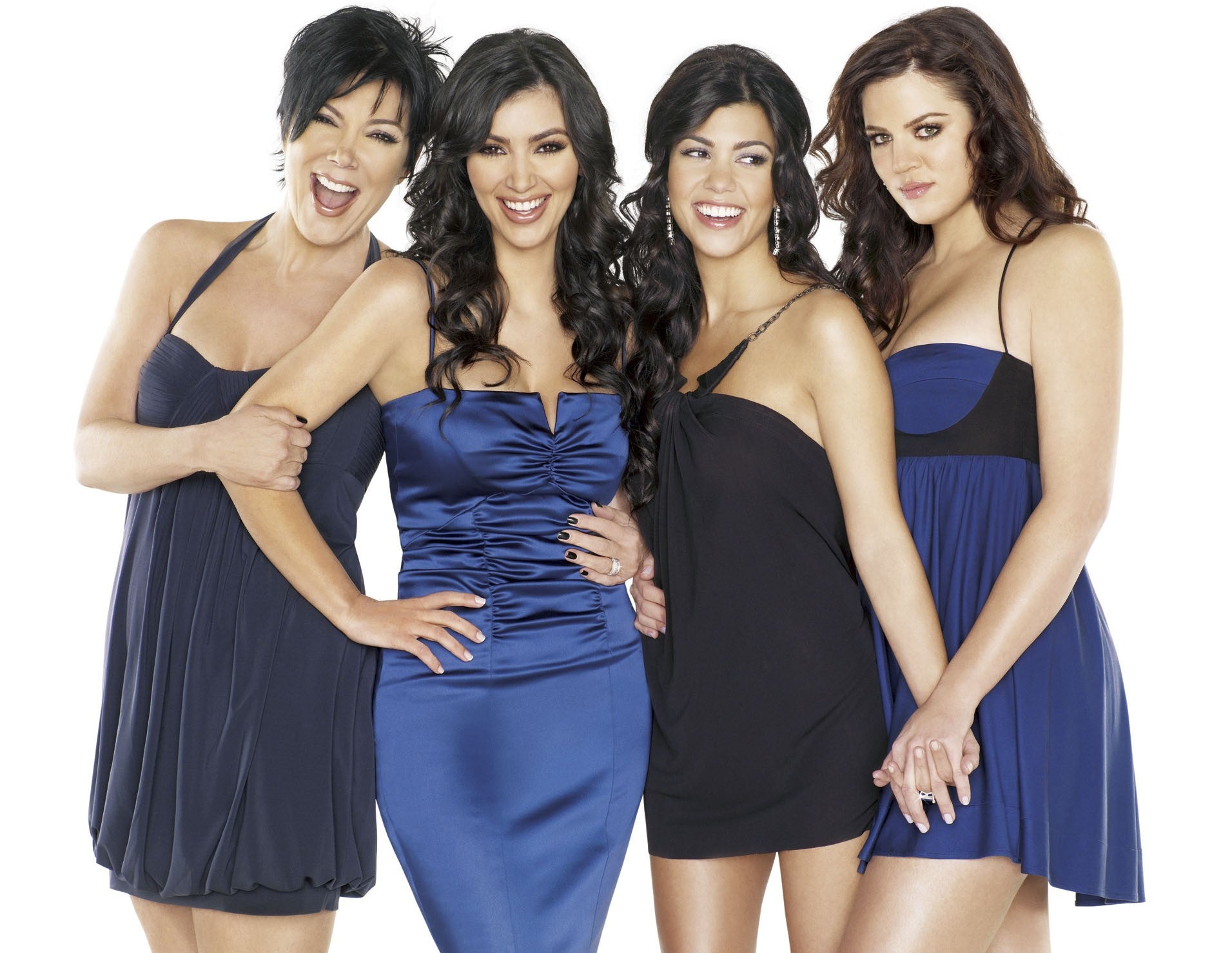You might sneer but the Kardashians changed what it means to be famous
After more than a decade, Keeping Up With The Kardashians is no longer. But do the family who defined the social media generation need it? Marisa Bate looks at how they changed the world


Your support helps us to tell the story
From reproductive rights to climate change to Big Tech, The Independent is on the ground when the story is developing. Whether it's investigating the financials of Elon Musk's pro-Trump PAC or producing our latest documentary, 'The A Word', which shines a light on the American women fighting for reproductive rights, we know how important it is to parse out the facts from the messaging.
At such a critical moment in US history, we need reporters on the ground. Your donation allows us to keep sending journalists to speak to both sides of the story.
The Independent is trusted by Americans across the entire political spectrum. And unlike many other quality news outlets, we choose not to lock Americans out of our reporting and analysis with paywalls. We believe quality journalism should be available to everyone, paid for by those who can afford it.
Your support makes all the difference.This article was originally published in September 2020. On 10 June 2021, Keeping Up With The Kardashians will air its final episode.
On Tuesday 8 September, after 14 years and 20 seasons, Kim Kardashian announced the end of Keeping Up With The Kardashians (KUWTK). The 39-year-old released a short five-paragraph statement on Instagram and Twitter to her combined 254 million fans across the platforms. It was somewhat understated for a family that embodies the antithesis of subtle, but also fitting at this point in their journey. It paid tribute to the tools that have given them celebrity super power, making them some of the most famous people in the world.
It is thanks to social media that Kim and her Kiblings were catapulted from the corners of sleepy Calabasas in West Hollywood, populated by the likes of Paris Hilton and Lindsay Lohan, into a new type of global megastardom that has fundamentally changed what it means to be famous.
Kim’s first foray into the world of internet fame was perhaps an indication of just how unprepared the world was for Kris Jenner’s level of personal marketing and crisis PR. Kim’s sex tape with ex-boyfriend Ray-J, leaked in 2007, wasn’t a source of dinner time embarrassment with the grandparents (at least not outwardly) but the precursor to a brand new TV commission by Ryan Seacrest, for the E! network, that would turn the Kardashians from names known only on LA party circuits to known on every sofa in the suburban home counties.
KUWTK’s mock-reality was not an entirely new format; MTV had The Osbournes, which first aired in 2002. But there was a major difference: Ozzy Osbourne was already famous for something; he was a rock star. The Kardashian/Jenner levels of fame at this point were tenuous; Kris Jenner was the ex-wife of OJ Simpson's lawyer, Caitlyn Jenner was a retired Olympian and Kim Kardashian was Paris Hilton’s assistant, with the occasional appearance on The Simple Life. Kylie Jenner, now reportedly the richest of the klan [Forbes declared her a billionaire before later retracting it], was just 10 years old.
But despite seemingly being a gamble on paper, success came quickly. Ratings were instantly impressive and continued to grow to record-beating heights. The family became influencers before the world even knew what an influencer was, live tweeting along to episodes and interacting with fans in real time. The more the world saw of them, the more the world wanted – and the more they sold. Of course, there is nothing new about celebrity endorsements. On the court, Michael Jordan played basketball. Off court, he sold Nike sneakers.
But something had changed. The Kardashians sold non-stop. They didn’t do anything but sell. There were the perfumes, the clothes, the tooth whitening stick, the books, the make-up, the emojis, the at-home laser hair removal product, the lip-kits, the reimagining of spanx underwear now called “SKIMS” (this product was originally called Kimono until the Mayor of Kyoto wrote to Kim informing her the cultural appropriation was offensive). Every episode, spin off show, or appearance on Dancing with the Stars was a marketing opportunity, and soon popular culture was consumed by the five sisters. Kris Jenner, infamous “momager” and architect of the Kardashian billion dollar empire, with a Murdochian flair for wielding power, made damn sure of it.
But what was it about these particular women? The sisters put their success down to relatability – a modern soap opera when soap operas had fallen out of fashion; a younger, chicer Dallas, perhaps. Yet the reality TV show version of family drama, the kind the Kardashians reigned supreme over, wasn’t just drama. It gave birth to the faux-reality that has become an intricate part of modern culture.
KUWTK cemented a presentation of false or adapted reality, as reality. Before this era, celebrities had boundaries. We saw them sing or act on stage or screen or throw or hit balls in stadiums and then we read curated and edited gossip columns about their lives. Now we were watching “celebrities” perform reality, package it up and sell it as reality. So we think we know them. We think we understand them. Yet how much of it was actually real?
This grey space would become the very DNA of social media, which grew hand-in-hand with the Kardashians, giving the perception of insight to someone's life even though it is heavily filtered and doctored. And, crucially, we all play along, hitting like, consuming it as if it is reality. In US Vogue’s 73 Questions series, Kim says: “I think we always keep it real, and there’s also no real situations.” The inherent contradiction at the heart of Kardashian fame.
Then in 2012, the pop culture world shifted on its axis. Kim joined Instagram and met Kanye West. West endorsed, the Kardashian fame rocketed to the next level. Two years after this she #BrokeTheInternet on the cover of Paper magazine. Kim’s butt became a news story for nearly two weeks. The day after Paper released the picture on their website, the traffic to their site accounted for one per cent of all US web browsing activity. By 2019, the sisters were reportedly charging half a million dollars per Instagram post.
As their fame continued an upwards accent, so did their influence. It was easy to spot women, especially young women, on the street with the same hair, the same make-up, the same clothes. Even aspiring to have the same body type. Brands like Boohoo and Pretty Little Thing catered for those who wanted the Kardashian look.
Simultaneously, despite a number of embarrassing faux pas (including but not limited to their much-criticised promotion of diet products, a tone-deaf Pepsi advert for Kendall and Kylie’s “sexy Handmaid’s Tale” party), the family were accepted into the fold of high fashion. Kim and Kendall graced the cover of Vogue, Kendall walks catwalks in Paris. Kim also started training as a lawyer and working to free incarcerated inmates in the US prison system. Yet again they were increasing their sphere of influence. And everyone wanted a slice of the Kardashians.
The sisters and their social media were bigger than the show; and for once, reality – or at least the tabloid version – was trumping Kris Jenner’s carefully constructed mirage of it
And they didn’t just influence culture – in many ways, they were the culture. In some cases, they changed the way we spoke and gave use a new set of references. Millions communicate through memes of Kim and Kris. Who could forget: “Kim would you stop taking pictures of yourself, your sister’s going to jail?” Even to those who detest them, they are an unwavering part of the cultural landscape that can’t be ignored.
Yet the story of the Kardashian fame comes with a warning. As they used social media to grow and dominate, KUWTK could no longer keep up. The press they craved and courted, could, on occasion, catch them out. TMZ could break Tristan Thompson cheating on Khloe before her, or any of the production team – and certainly before she'd had time to record an interview to camera. The sisters and their social media were bigger than the show; and for once, reality – or at least the tabloid version – was trumping Kris Jenner’s carefully constructed mirage.
The show couldn’t control fathers changing sex or husbands running for president and having a very public mental health crisis. And so a social media fable for us all; a warning about where we draw the lines of what we give away of ourselves, however much we think we’re in control, however much money we could make.
The Kardashians adapted the American dream for the Insta-age. They appeared at the perfect time, encapsulating exactly what it means to be famous online, when truth is no longer perceived as objective but as the reality you want to believe. For those who sneer at the Kardashians, you may have valid critiques (plenty do) but you cannot overlook their success. Whether the rest of us would want to live a life so constantly under the scrutiny of a camera is another question, but they taught us if you take enough selfies (an entire book’s worth in Kim’s case) and sell yourself hard enough, then what you are selling becomes secondary.
The Kardashians have redrawn the boundaries of fame just at the moment social media redrew our proximity to celebrities. They rode that wave understanding, in a Trumpian vein, that they don't have to be talented, they don’t have to achieve anything, and they don’t even have to be “real”. None of that is the point any more. The point is: are you buying what they are selling?


Join our commenting forum
Join thought-provoking conversations, follow other Independent readers and see their replies
Comments